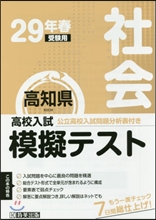
늙은 선원의 노래 (The Rime of the Ancient Mariner) 들으면서 읽는 영어 명작 664
- 저자사무엘 테일러 콜리지 (Samuel Taylor Coleridge) 저
- 출판사유페이퍼
- 출판일2016-12-06
- 등록일2017-07-18
- SNS공유


- 파일포맷EPUB
- 파일크기774KB
- 공급사YES24
-
지원기기
PC
PHONE
TABLET
프로그램 수동설치
전자책 프로그램 수동설치 안내
아이폰, 아이패드, 안드로이드폰, 태블릿,
보유 10, 대출 0,
예약 0, 누적대출 7, 누적예약 0
책소개
◆ 국내에 자주 소개되지 않은 명작을 발굴하여 전자책으로 출간하는 숨어있는 명작 시리즈 ◆;
;The Rime of the Ancient Mariner (originally The Rime of the Ancyent Marinere) is the longest major poem by the English poet Samuel Taylor Coleridge, written in 1797?98 and published in 1798 in the first edition of Lyrical Ballads. Modern editions use a revised version printed in 1817 that featured a gloss. Along with other poems in Lyrical Ballads, it was a signal shift to modern poetry and the beginning of British Romantic literature.
;The Rime of the Ancient Mariner relates the experiences of a sailor who has returned from a long sea voyage. The mariner stops a man who is on the way to a wedding ceremony and begins to narrate a story. The wedding-guest's reaction turns from bemusement to impatience to fear to fascination as the mariner's story progresses, as can be seen in the language style: Coleridge uses narrative techniques such as personification and repetition to create a sense of danger, the supernatural, or serenity, depending on the mood in different parts of the poem.
;
;--------- 오디북 북 + 이북이 / 하나로 = 입체전자책 -----------
;- ★ 보이스 전체를 다운로드 받아서 편리하게 들을 수 있습니다 ★
;- ★ 전자책과 오디오북(원어민이 들려주는)이 하나로 합쳐진 입체전자책 - ★
;- 영어 학습을 위한 최고의 입체 전자책입니다.
;- 읽으면서 한 번의 클릭으로 동시에 듣습니다. (크롬 환경 최적격)
;- 주제(Chapter) 마다 한 번의 클릭으로 편리하게 들을 수 있습니다.
;- 핸드폰도 편리하며 CD가 필요 없습니다. A
;- 추천작이며 엄선된 작품입니다. -
;- 주의 / 인터넷 환경에 따라 스트리밍이 일어날 수 있으며 보이스 접속이 종단 될 수 있습니다. (현재까지 접속중단은 없음)
;------------ Audio book + e book = solid book --------------
;★ 부록에 『영어 글쓰기 기본 (The Elements of Style)』첨부.
;100년 가까운 세월 동안 미국에서 가장 많이 팔린 글쓰기 책이며, 2011년에 타임지가 선정한 1923년 이후 영어로 발행된 가장 영향력 있는 100대 도서 중 하나.
;-----------------------
목차
쉬운 사용 설명서작가 소개
■ The Rime of the Ancient Mariner
- Contents
PART THE FIRST.
PART THE SECOND.
PART THE THIRD.
PART THE FOURTH.
PART THE FIFTH.
PART THE SIXTH.
PART THE SEVENTH.
작품 소개
★ 원어민 보이스 다운로드 받는 곳 ★
입체 전자책 시리즈 소개
오디오북으로 영어를 공부하는 방법: 완벽가이드
부록 ▶ 영어 글쓰기 기본 (THE ELEMENTS OF STYLE)
- CONTENTS
I. INTRODUCTORY
II. ELEMENTARY RULES OF USAGE
III. ELEMENTARY PRINCIPLES OF COMPOSITION
IV. A FEW MATTERS OF FORM
V. WORDS AND EXPRESSIONS COMMONLY MISUSED
VI. SPELLING
VII. EXERCISES ON CHAPTERS II AND III
판권 페이지
















